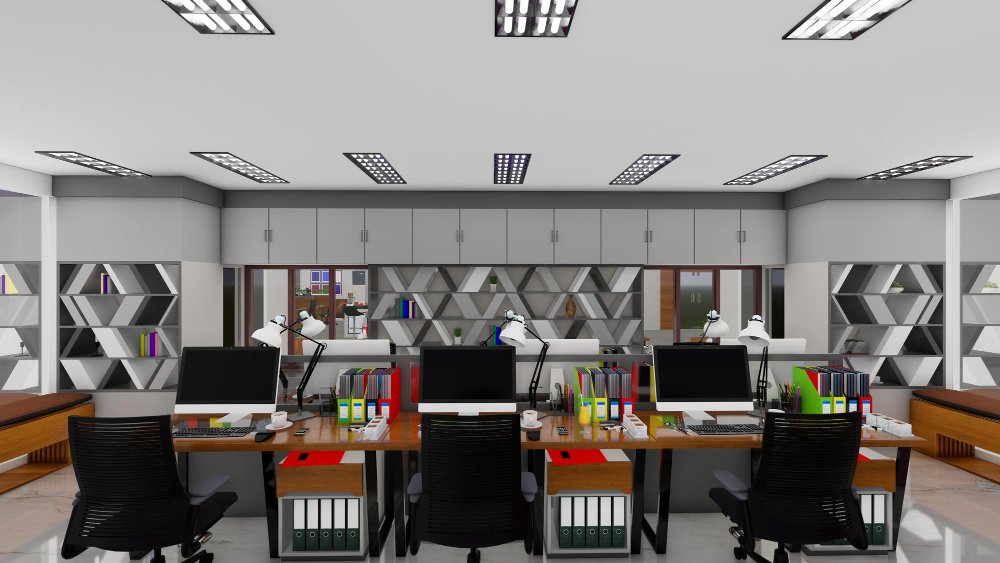Optimizing Call Center Cubicle Layouts for Efficiency and Comfort
- 1 How To Optimize Call Center Cubicle Layouts for Efficiency and Comfort
- 1.1 Developing the Best Working Conditions
- 1.2 Importance of Privacy and Communication
- 1.3 General Knowledge About Call Center Cubicles
- 1.3.1 Space Utilization
- 1.4 Essential Components of an Effective Cubicle Design
- 1.4.1 Ergonomics
- 1.4.2 Technology Integration
- 1.4.3 Lighting and Air Quality
- 1.5 Modern Call Center Layouts
- 1.6 Implementing Your Layout Design
- 1.6.1 Employee Involvement
- 1.6.2 Minimizing Disruption
- 1.7 Enhancing the Work Environment
- 1.7.1 Personalization
- 1.7.2 Wellness Programs
- 2 Conclusion
In any call centre, the work environment arrangement significantly impacts workers’ well-being and productivity. Cubicle design aims to create an aesthetically pleasing interior and ensure that employees are comfortable and efficient at work. This balance can increase call centre employee satisfaction and performance, which are critical for any organization relying on call centre services.
How To Optimize Call Center Cubicle Layouts for Efficiency and Comfort

Developing the Best Working Conditions
Creating optimal working conditions requires careful planning. The layout should facilitate free communication while offering privacy, enabling employees to feel at ease and concentrate simultaneously. Achieving this balance is essential in call center design. Incorporating insights from a well-structured call center agent training program can further enhance how effectively these conditions are met, ensuring that employees not only work comfortably but also maximize their productivity.
Importance of Privacy and Communication
Privacy in a call centre setting does not necessarily mean complete isolation. Instead, it refers to an environment where employees can handle calls without being distracted or overheard. Effective communication channels should also be maintained to foster teamwork and information sharing.
General Knowledge About Call Center Cubicles
Call center cubicles are functional structures that handle calls and other semi-private tasks. Typically, these cubicles are small and arranged in rows to maximize space utilization. Each cubicle usually includes a desk, a computer, and sufficient room for equipment and personal belongings.
Space Utilization
Maximizing space utilization without compromising comfort is crucial. Modern call centres often adopt modular designs that allow flexibility in arranging workspaces to suit different needs.
Essential Components of an Effective Cubicle Design
Ergonomics
A good cubicle layout prioritizes ergonomics and positioning furniture and equipment to minimize strain and fatigue. For instance, computer monitors should be at eye level, and chairs should be adjustable to accommodate various body sizes. Ergonomically designed workspaces can reduce the risk of repetitive strain injuries and improve overall comfort.
Technology Integration
Technology plays a vital role in call centre operations. Effective cubicle design should ensure easy access to power outlets, efficient cable management, and robust connectivity options. Integrating technology seamlessly into the workspace prevents it from hindering productivity.
Lighting and Air Quality
Proper lighting and air quality are essential components of a comfortable workspace. Natural light is ideal, but if it’s not feasible, adjustable artificial lighting that reduces glare and eye strain should be used. Additionally, good ventilation and air filtration systems can help maintain a healthy environment, reducing the likelihood of headaches and fatigue.
Modern Call Center Layouts
Flexible and Collaborative Spaces
Today’s call centres are moving towards more flexible arrangements that combine private and communal areas. Dedicated spaces for focused work and collaborative zones for team interactions can enhance productivity and employee satisfaction.
Acoustic Solutions
Noise is a common issue in call centres. Implementing acoustic screens and partitions can help manage sound levels, creating a quieter and more conducive environment for phone conversations. Sound-absorbing materials and strategic placement of noise barriers can further enhance acoustic comfort.
Implementing Your Layout Design
Employee Involvement
Involving employees in the design process is crucial, as they are the primary users of the space. Gathering feedback on what works and what doesn’t can lead to a more compelling layout.
Minimizing Disruption
Once a design plan is established, it’s essential to implement changes with minimal disruption to daily operations. This can be achieved by redesigning in phases or during off-hours. Clear communication with employees about the timeline and process can help manage expectations and reduce stress.
Enhancing the Work Environment
Personalization
Allowing employees to personalize their workspaces can increase their sense of ownership and comfort. Simple additions like family photos, plants, or personalized desk accessories can significantly affect employee morale.
Wellness Programs
Integrating wellness programs into the workplace can further enhance employee satisfaction. This could include offering ergonomic assessments, providing healthy snacks, or encouraging regular breaks for stretching and relaxation.
Conclusion
Designing call centre cubicles goes beyond aesthetics; it is crucial for improving the efficiency and well-being of employees. By focusing on ergonomics, technology integration, privacy, and communication, it is possible to create a work environment that promotes satisfaction and productivity. Involving employees in the design process and implementing changes thoughtfully ensures that the workspace meets their needs and supports their performance. A well-designed call centre not only enhances employee well-being but also contributes to the organisation’s overall success.

















